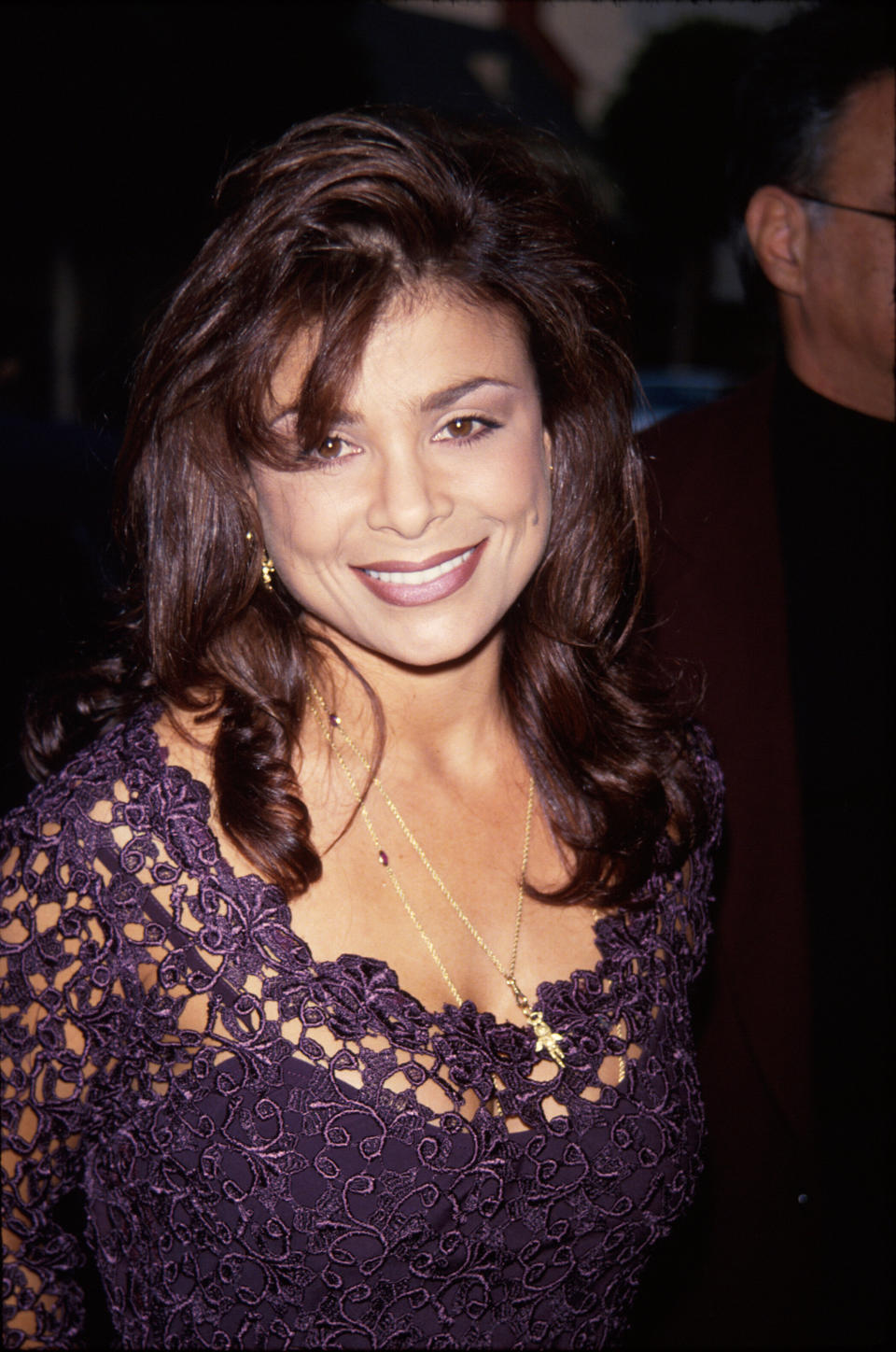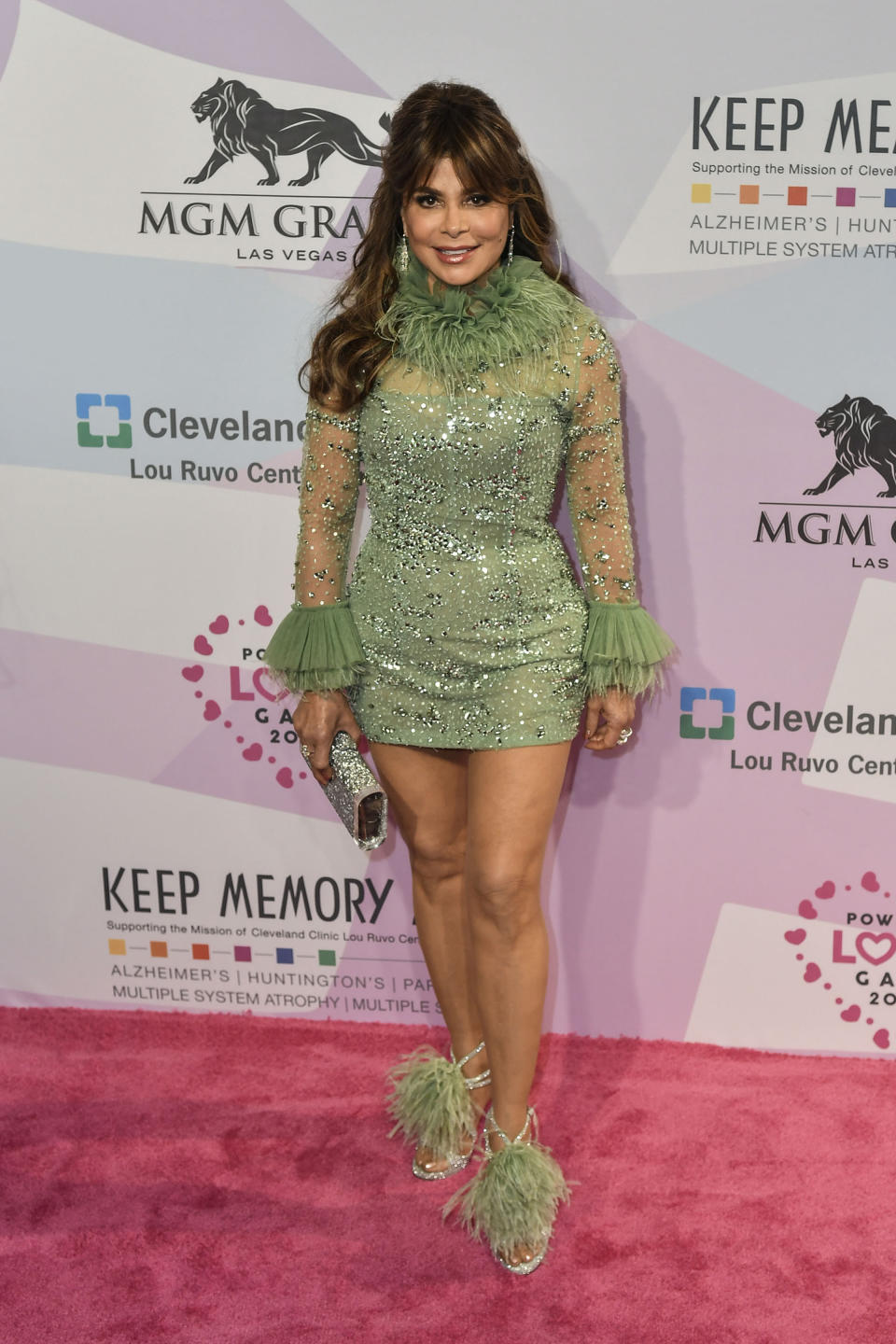Paula Abdul opens up about mysterious 1993 plane crash
Paula Abdul has wowed onlookers with her recent death- and gravity-defying live performances, during which she has swan-dived from “Cold-Hearted”-style scaffolding into the waiting arms of her reliable backup dancers.
Such “daredevil” feats are especially stunning considering the 57-year-old pop star’s extensive past injuries.
But that trust-fall hasn’t been the most shocking segment of Abdul’s Forever Your Girl Vegas residency, headlining performance at last year’s L.A. Pride festival, or other recent comeback concerts.
Read more: Kate Beckinsale says Harvey Weinstein told her to 'shake her a**' on red carpet
Instead, it’s her emotional mid-show monologue about a 1993 plane crash that required 15 cervical surgeries and led to Abdul living in near-constant agony for years.
While Abdul — when asked about her time away from the limelight — did discuss the emergency crash landing in a few early/mid-2000s interviews, until recently she “didn't want to talk too much about it, because it took me a long time to build the career that I had, and I didn't want to be counted out or fearful of people not understanding and thinking that, ‘Well, maybe she's really not doing well,’” she explains to Yahoo Entertainment.
In the last year or so, as she’s become more outspoken both in interviews and onstage about her injuries and recovery, some gossip sites, like Jezebel and DListed, have claimed that Abdul entirely fabricated her mysterious plane-crash story. But Abdul shrugs off such accusations.
“You know what? It's like, there are seven other people that were on the plane, who were in that plane accident with me. So, I really don't care what people have to say. I don't,” Abdul asserts. “It's like, you learn and grow through wisdom and experience of being in this business, especially with the internet. You can't take things personally, and the things that resonate with you that can help you become better, the best version of yourself, you hold onto and you work through that. If there's something that you know you can actually work on that can improve who you are as a performer or as a professional or as a human being, I resonate with that. And the other stuff isn't my business.”

Now Abdul is once again opening up about her traumatic accident that she says happened during her Spellbound tour. “When we plummeted, I hit my head on the ceiling of the plane. I was really injured. I mean, I had a spinal cord injury and nerve damage,” she recalls. “I started losing all feeling on my right side, and I was starting to really live in excruciating pain. So back then neurosurgery, especially with having spinal cord injury and having surgery, there was a 50/50 chance to get better. But I was willing to try, because the quality of my life was starting to really suck, and it hurt. … From a [pain] scale of one to 10, my ‘normal’ was hovering at seven. You learn to live like that. It was not fun. I wasn't able to do what I love, my heart place, which is dancing. That wasn't happening.”
Despite losing all feeling on her right side and developing reflex sympathetic dystrophy syndrome (RSD), a disorder that “fires so intensely that sometimes your skin can break out in lesions like shingles,” Abdul says she was “doing anything and everything I could to stay in the game…. I was a perfect pain-management patient at Cedars-Sinai. I followed every rule, everything they asked me to do. And I wasn't getting significantly better.”

After she traveled around the world unsuccessfully in search of a miracle cure (“I felt like I could become an honorary neurosurgeon, because I knew so much about what was happening to my body,” she quips), Abdul finally “tried neuroscience. And that changed my life.”
Read more: Tom Hanks' son gives update on parents after coronavirus diagnosis
Abdul started undergoing “intense biofeedback. … It's all through exercises that are like audio-spatial. I'd stare at a screen and look at red squares, yellow dots. I would see if the pain is easier or worse if I'm going ascending from the top of the screen, to descending, ascending from he bottom of the screen to the top, back and forth. Then you do ear-irrigation and balancing exercises. It was crazy. What they did is they rewired my neurotransmitters to block pain.” Abdul says she’s been happily pain-medication-free for almost nine years now, as a result of biofeedback treatment.
Now, Abdul is focused on self-esteem and self-care. And she credits the “cutting-edge laser treatments” Evoke (for the face) and Evolve (for the body) by a company called InMode, for which she is an ambassador, for helping her look and feel her best “as a woman and trying to age gracefully.”
“A lot of women here in this industry, they don't talk about this — until now. Thank God for the Kardashians, moving the needle and showing laser procedures on television and actually educating women of what's out there,” says the always candid Abdul. “I work out a lot, I'm pretty healthy and active, but there's certain areas that I felt like could use a little more sculpting… and I just wanted to have a sleeker jawline. I'm not ready for the facelift and cutting — I wanted any alternative to doing that — and I don't have downtime. So I needed something that was so minimal, I literally was out walking and enjoying my life the next day.
“Zero pain. Zero downtime.”

 Yahoo Finance
Yahoo Finance 
